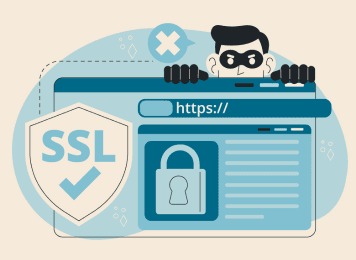SSL (Secure Sockets Layer) certificates have become essential for securing websites, protecting user data, and establishing trust. However, improper handling of SSL certificates can lead to performance issues, user frustration, and even security vulnerabilities. Here, we’ll discuss the top five SSL-related mistakes website owners commonly make and how these missteps impact website performance, security, and credibility. By addressing these issues, website owners can safeguard their sites and maintain a smooth, secure user experience.
Top 5 Mistakes Website Owners Make with SSL Certificates and Their Impact on Website Performance
Iliya Timohin
2024-11-18

Top 5 Mistakes Website Owners Make with SSL Certificates and Their Impact on Website Performance
1. Not Monitoring All Critical Pages
SSL certificates do more than just protect data transfer—they’re also essential for ensuring a secure, seamless experience across every critical page on your site. Many website owners make the mistake of securing only their homepage or a few main pages, leaving other essential pages like login, checkout, and contact pages vulnerable. This selective approach can break the user journey, resulting in frustrating security warnings that may lead users to abandon the site entirely.
Impact: Users encountering unsecure warnings on any page are more likely to lose trust in the website, negatively impacting both user engagement and conversion rates. Security issues on critical pages can also affect SEO rankings, as search engines prioritize fully secure websites.
Solution: Ensure that SSL protection extends to every essential page on your site. Regularly monitor these pages for SSL errors or certificate mismatches, and verify that each page consistently displays the secure HTTPS prefix to reassure users and prevent them from facing security warnings.
2. Using a Single Monitoring Location
Monitoring SSL performance from only one location is a common mistake that may not reveal the full picture of your site’s security and performance. Variations in latency and connection speeds from different regions can lead to slow page loads, and SSL validation issues may only appear in specific geographical areas. Relying on a single location might cause website owners to miss out on regional SSL performance problems.
Impact: Regional SSL performance issues can result in slow load times or even inaccessible pages for users in specific regions. Slow load times not only lead to a poor user experience but also impact search engine rankings, as page speed is a factor in SEO algorithms.
Solution: Utilize a global monitoring solution that checks SSL performance from multiple locations. This approach enables you to catch location-specific issues early, ensuring a consistent and fast experience for users worldwide.
3. Infrequent Monitoring Intervals
Checking SSL certificates only sporadically can result in unexpected downtime or undetected certificate errors. SSL certificates expire periodically, and failure to renew them on time can disrupt site functionality. Additionally, infrequent monitoring may cause slowdowns or certificate misconfigurations to go unnoticed, impacting user experience and SEO rankings.
Impact: SSL certificate expiration can lead to major accessibility and trust issues, with users being greeted by “Not Secure” warnings that deter them from proceeding. This scenario also impacts your SEO ranking, as search engines penalize sites with expired SSL certificates and broken HTTPS connections.
Solution: Set up automated SSL monitoring with frequent intervals, especially as the expiration date nears. SSL monitoring tools can provide timely alerts for certificate expiration, certificate authority (CA) updates, or vulnerabilities, allowing you to resolve issues before they impact users.
4. Ignoring SSL Expiry and Security Issues
SSL certificates have expiration dates, and an expired SSL can harm user trust and cause accessibility issues. Many website owners, however, overlook the expiration date, leaving their sites vulnerable to security breaches and causing users to see warnings about an unsecured site. Additionally, failing to update SSL certificates to address new vulnerabilities can open the door to cyberattacks.
Impact: Expired or insecure SSL certificates can severely damage your site’s credibility, making users hesitant to provide personal information or make purchases. Security breaches also result in financial and reputational losses, and search engines deprioritize sites with expired SSL certificates, damaging your SEO.
Solution: Implement automated SSL expiry alerts and regularly update certificates. SSL monitoring services can also scan for new vulnerabilities, ensuring that your SSL setup meets current security standards. Staying vigilant with SSL security updates protects your site from potential attacks and maintains user trust.
5. Neglecting Mobile Performance Monitoring
Mobile users account for a significant portion of internet traffic, but website owners often overlook how SSL performance affects mobile device access. Differences in network strength, mobile hardware, and SSL handling can result in mobile-specific issues that don’t appear on desktops, such as increased load times or connectivity problems.
Impact: SSL issues affecting mobile performance can lead to user dissatisfaction, especially since mobile users expect a fast, seamless experience. Poor mobile performance not only reduces engagement but also harms your SEO rankings, as search engines prioritize mobile-friendly sites.
Solution: Incorporate mobile-specific SSL monitoring to test SSL performance across various mobile devices and network conditions. This approach allows you to identify SSL issues that impact mobile users and make necessary adjustments to optimize SSL for all devices.
Conclusion
SSL certificates are essential for securing your website, protecting user data, and maintaining credibility, but common mistakes can undermine these benefits. By avoiding these top SSL-related mistakes — such as failing to monitor critical pages, using a single monitoring location, infrequent monitoring, ignoring SSL expiry, and neglecting mobile performance monitoring—website owners can ensure a secure, fast, and user-friendly experience.
Optimized SSL monitoring not only enhances security but also bolsters SEO and user trust, contributing to a positive reputation and a seamless user journey. Regular, proactive SSL management ultimately results in a more resilient website, safeguarding both user data and your business reputation.
Top 5 Mistakes Website Owners Make with SSL Certificates and Their Impact on Website Performance
1. Not Monitoring All Critical Pages
2. Using a Single Monitoring Location
3. Infrequent Monitoring Intervals
4. Ignoring SSL Expiry and Security Issues
5. Neglecting Mobile Performance Monitoring
Conclusion